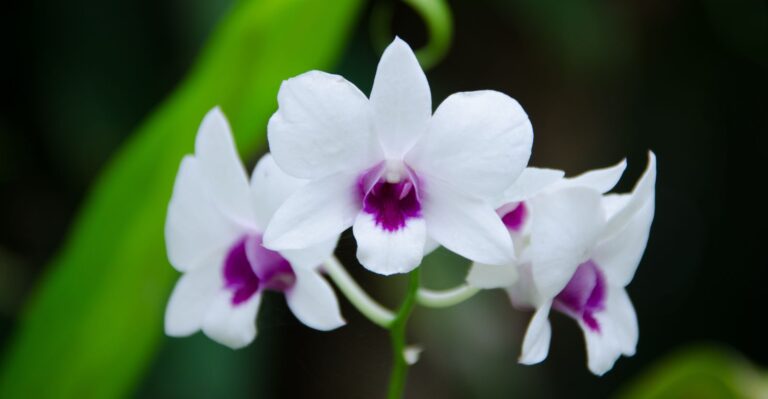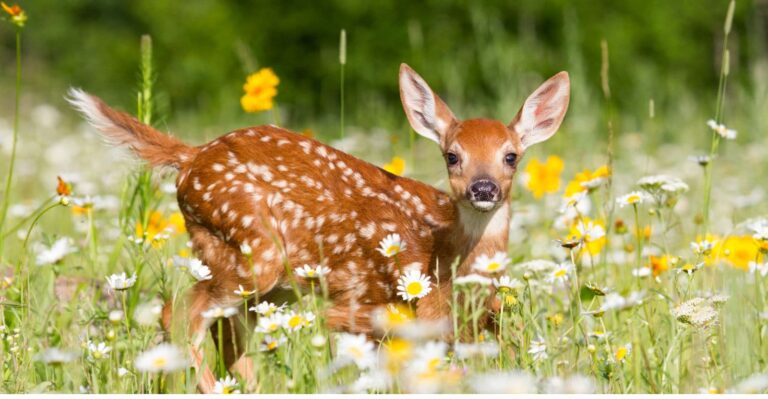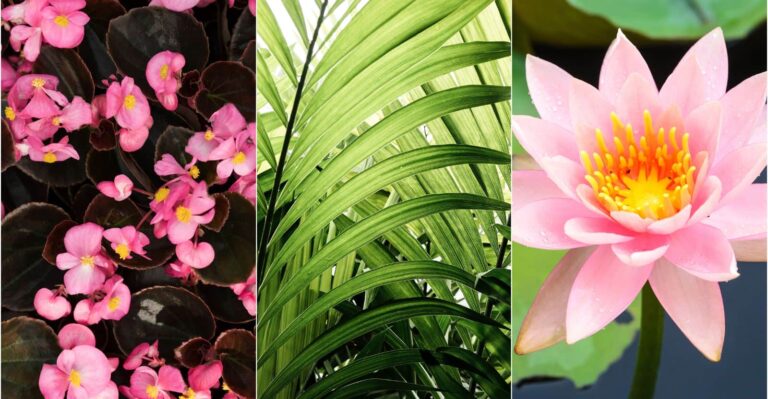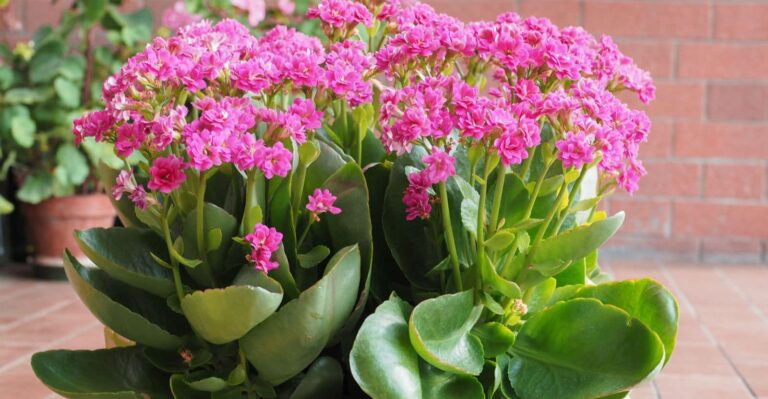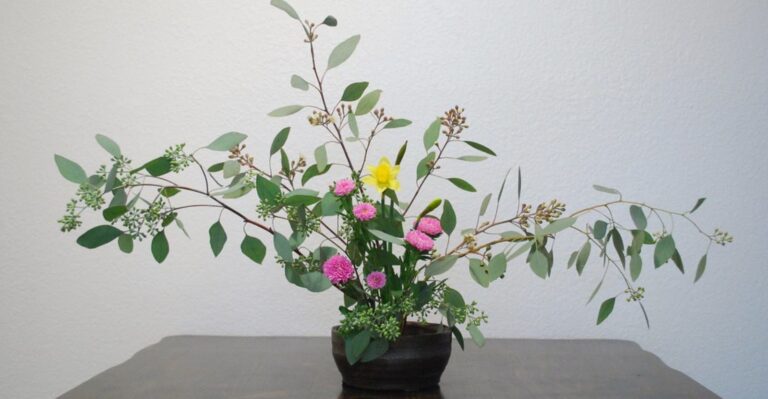Amazon has put together some great Home Gift Deals – save money and get your shopping done at the comfort of your home! Click here to see deals on Amazon
Low-light indoor plants might be the way to go for indoor hanging plants. These plants can thrive in low-light areas of your home or office, which these days are often filled with electronic devices and appliances. Add in the fact that low light indoor plants require less watering, and you got yourself a winner.
If you want to know some of the best low light indoor hanging plants you can bring to your home to make it more welcoming and cheerful, keep reading.
What is considered low light for a houseplant?
When growing indoor houseplants, there will be times when your plants aren’t getting enough light. Low light means when the light intensity is equivalent to a 10–15 watts light bulb luminosity. Most plants need a light intensity equivalent of 15–20 watts light bulb. If these plants receive less than the required light, they won’t be as healthy.
You can use low-light houseplants such as Maranta leuconeura (prayer plant) to remedy this problem. They provide the same look as a regular houseplant but don’t require as much bright light.
We have covered several other indoor plants that won’t require much sunlight below. These plants are suitable for growing indoors toward a north-facing window or around a dark corner such as a basement.
What are the best indoor hanging plants for low light?
A couple of plants are ideally suited for low-light conditions. These plants usually require less sunlight and thrive in the shade. Here is our list of the top 19 low-light hanging plants that need the least light.
1. Lipstick Plant (Aeschynanthus pulcher)

A lipstick plant is an indoor hanging plant that does well in low light. They’re popular for their bright red flowers that resemble lipstick colors. They’re easy to care for and can be placed in any house room.
You can grow different lipstick plants that bloom red, orange, or pink flowers. When not blooming, the glossy green leaves grow up to 75 cm long, providing indoor green cover.
It grows in the moist areas of the house, and in its natural habitat, it grows in shady areas. You can hang this away from the direct sunlight area and water it lightly when required.
Fertilize it light once a month during the blooming period in spring and summer. This plant is the symbol of eternal love and happiness.
2. English Ivy (Hedera helix)

English ivy is a low-growing, trailing plant. When planted outdoor, it spreads rapidly and is sometimes difficult to eradicate. It’s also known as ivy creeper because the stems creep along the ground. This makes it perfect for the hanging plant due to its vine-like stems.
It’s a low to medium maintenance plant, and with proper care and watering, it can grow to between 10 and 20 feet. This is a non-fussy, lowlight-required plant that prefers indirect light. It grows best in well-drained soil, so add mulch to the top to keep the soil moist.
3. Heart leaf philodendron (Philodendron hederaceum)
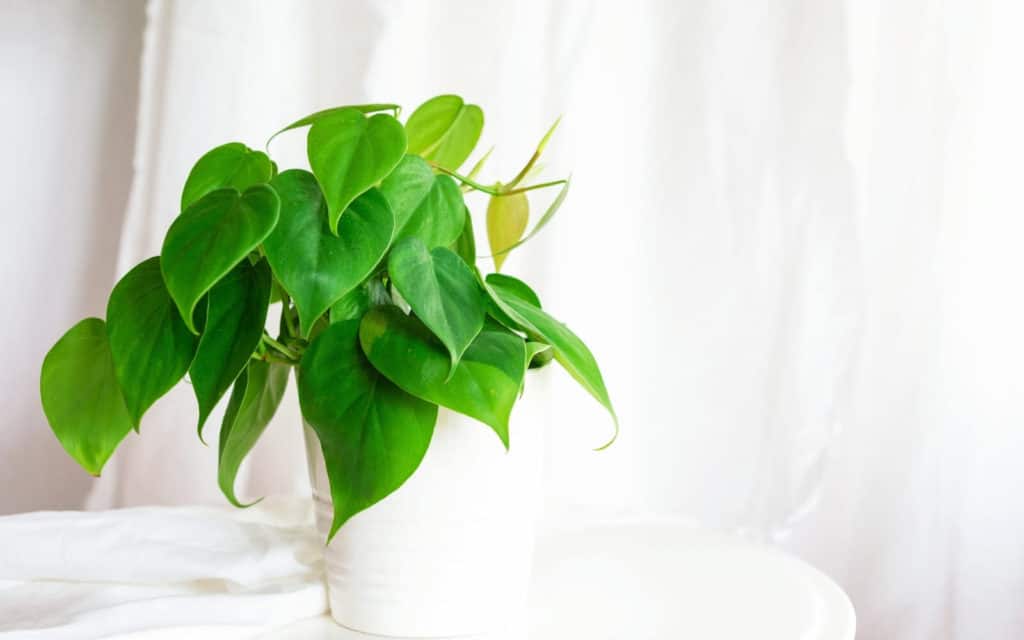
The Heartleaf philodendron is a tropical plant that grows best in a shady area. It can grow up to 3 feet tall, with glossy, heart-shaped leaves. The plant is light green and has a reddish vine.
Growing indoors requires warm temperatures and bright indirect light for the best growth. But once properly established, you can place them in areas to create greenery without worrying much about providing light.
When growing this as a hanging plant, it’s best to keep the moist soil and place it in a partial shade area with high humidity. It’s a perennial plant that doesn’t like to be overwatered, which means less hassle for caring at hanging baskets.
4. Watermelon Peperomia (Peperomia argyreia)

Peperomia’s green leaves are bright shiny green. It has clusters of colorful, pink flowers that bloom in later summer and attract hummingbirds. It belongs to the genus in the Araceae family native to South America.
The watermelon peperomia has wide, heart-shaped leaves with a fern-like appearance. The plant produces small, bell-shaped white flowers, which bloom from late spring to early fall. It’s an excellent plant for indoors and outdoors that spreads quickly, so gardeners should be cautious when planting it outdoors.
5. Aroid Palm (Zambioculcas zamiifolia)
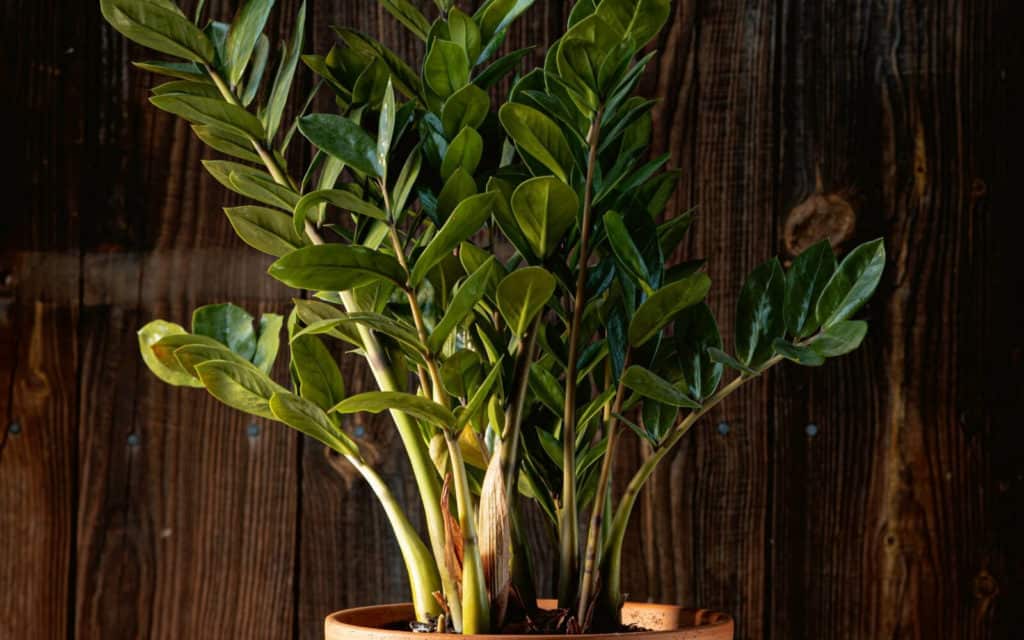
Aroid Palm is a low-light plant that doesn’t require much light to grow. It’s a good choice for indoors where there is meager light or artificial light and difficult for other plants to survive. This is also known as the ZZ plant, which grows dark green large-sized leaves.
This tropical plant thrives in a warm and high humidity environment, but it can be kept as an indoor plant. It does well when placed in the north-facing window, where it can get some indirect light. You should water it when the soil feels dry and be cautious of overwatering or exposing it to direct light.
6. Arrowhead Vine (Syngonium podophyllum)
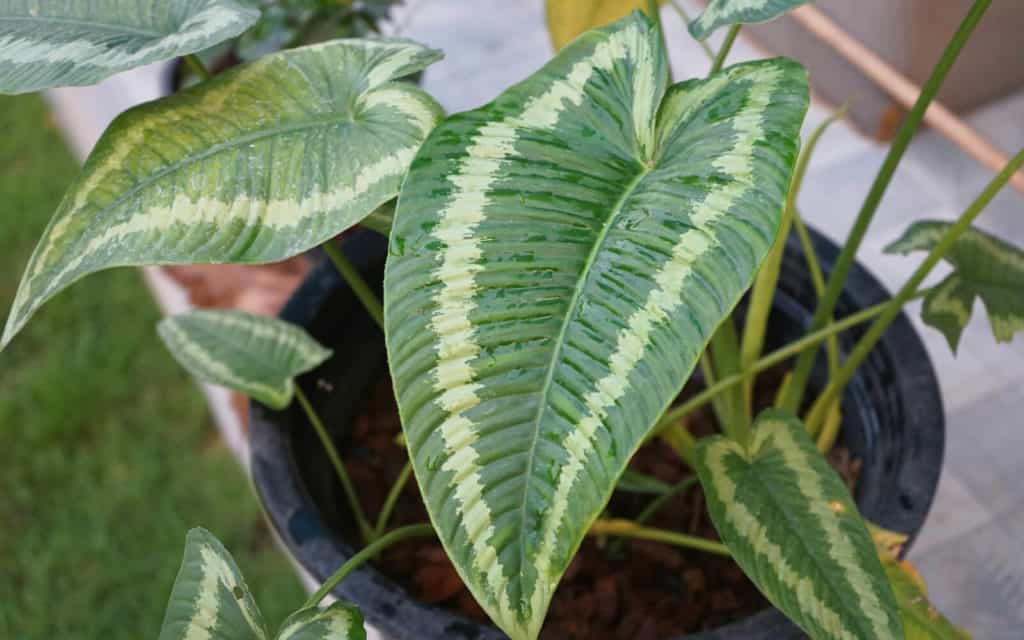
The Arrowhead plant is a perennial trailing vine native to South America. It’s often found in moist, shady areas and grows up to 5 feet. It produces clusters of white, fragrant flowers in summer. It’s a popular low-light hanging plant that doesn’t like direct sunlight.
It’s a low-maintenance indoor hanging plant with dark green leaves and small white flowers. When growing in a hanging pot, the vine can grow several feet long, but you can keep it shorter indoors. This is a low-light tolerant plant. You can use it in areas with moderate light than other plants, such as living rooms, bedrooms, or offices.
7. String of Pearls (Senecio rowleyanus)
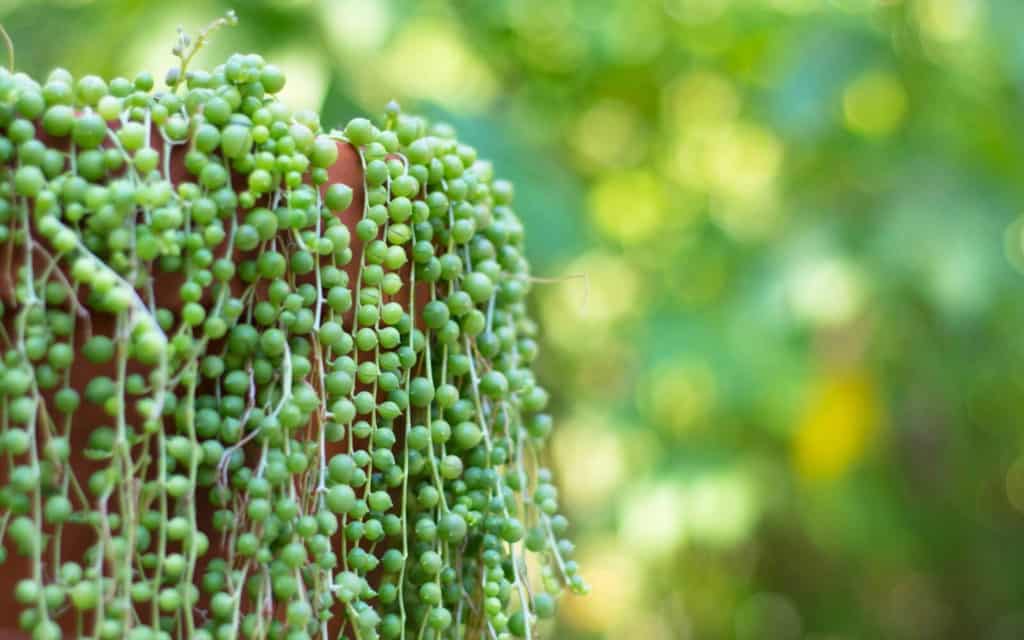
The string of pearls is a low light indoor hanging vine perfect for apartments. It can tolerate low light and has long stems that make it a great hanging plant. The large, lustrous leaves make this a beautiful addition to any room.
It’s also known as a string of beads or bead plant that looks stunning while hanging as a planter. You can spread these vines around a hanging pot that can grow up to 3 to 4 feet long.
The vining plant beads are fun to look at and are hard-wearing. It grows in shady areas, such as under trees, when planted outdoors. It’s not very fussy about the soil and needs less watering.
8. Trailing Jade Plant (Peperomia rotundifolia)

Consider the trailing jade if you’re looking for a low-maintenance indoor hanging plant that can add a touch of elegance to any room. This is a perfect indoor plant as it’s very easy to care for and can withstand low light levels well.
It’s one of my favorite plants as it’s attractive and can tolerate low light, which is okay if you have limited room space or don’t want frequent watering.
It’s a fast-growing vine that can grow up to several feet long. They’re low maintenance, require occasional watering, and are very adaptable, growing well in bright or dim light.
9. Bird’s nest fern (Asplenium nidus)
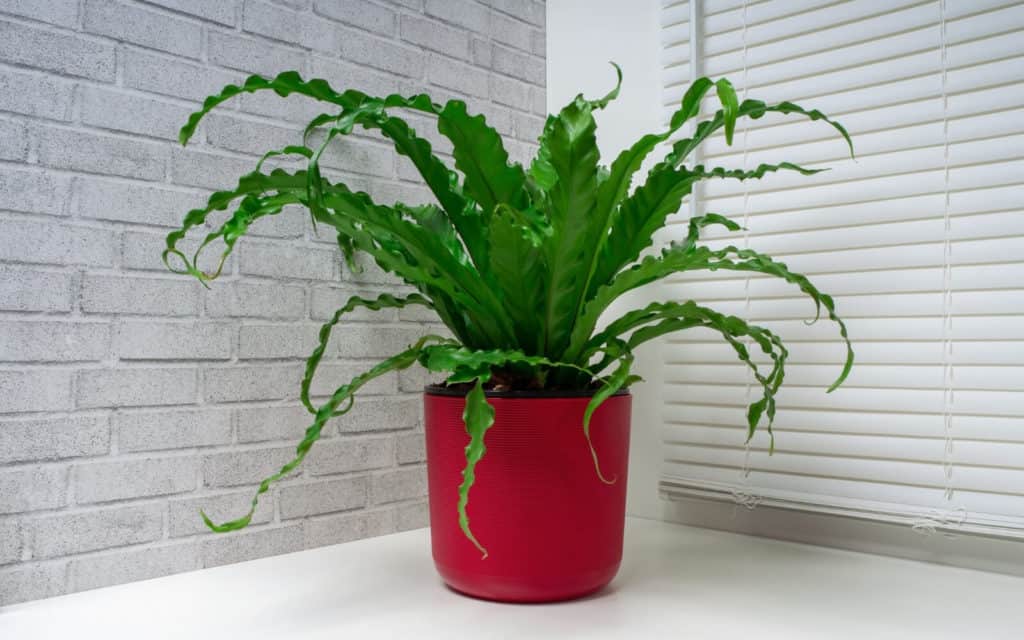
Bird’s Nest Fern, also known as Asplenium nidus, is a low-light indoor hanging plant that thrives in indirect light. This fern can be easily grown in a pot or hanging basket and requires little maintenance. It can reach up to 30 inches tall and 12 inches wide.
It’s a low-light plant and does best in a bright, spot-free area. It’s a perennial that does well in well-drained and moist soil. The leaves are soft and fleshy with smooth, tall, and oval-shaped leaflets.
This easy-to-grow can be placed anywhere in the home, near a window or door. The beautiful green leaves and delicate fronds make this ideal for an indoor hanging plant.
10. Gloxinia (Sinningia speciosa)
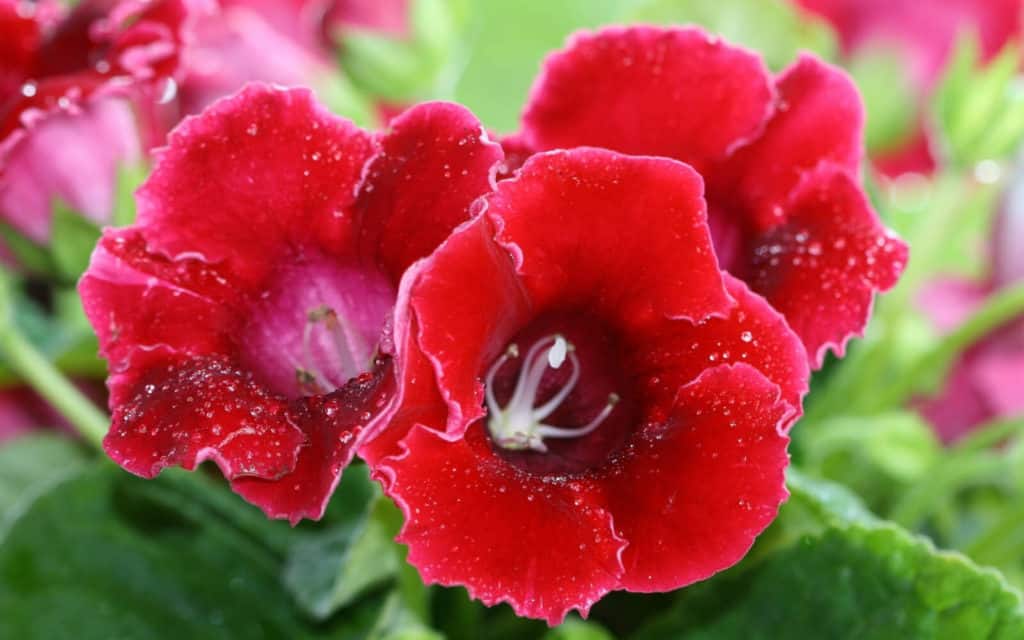
Gloxinia is a low-light popular houseplant that doesn’t require much care, perfect for people with busy lifestyles. It’s also a great option for those who don’t have much space in their homes.
They can grow up to 15 inches tall and has flowers of different sizes and shades of pink, purple, white, or red. These are very easy to grow beautiful plants, but they require little more care than other indoor plants.
Gloxinia grows best in indirect light and can easily adapt to a room’s lighting conditions. This makes it perfect for homes with little or no natural light. The soil should remain moist at all times but not wet. You can feed it once a month with liquid fertilization while the plants are ready to bloom.
11. Air Plant (Tillandsia)
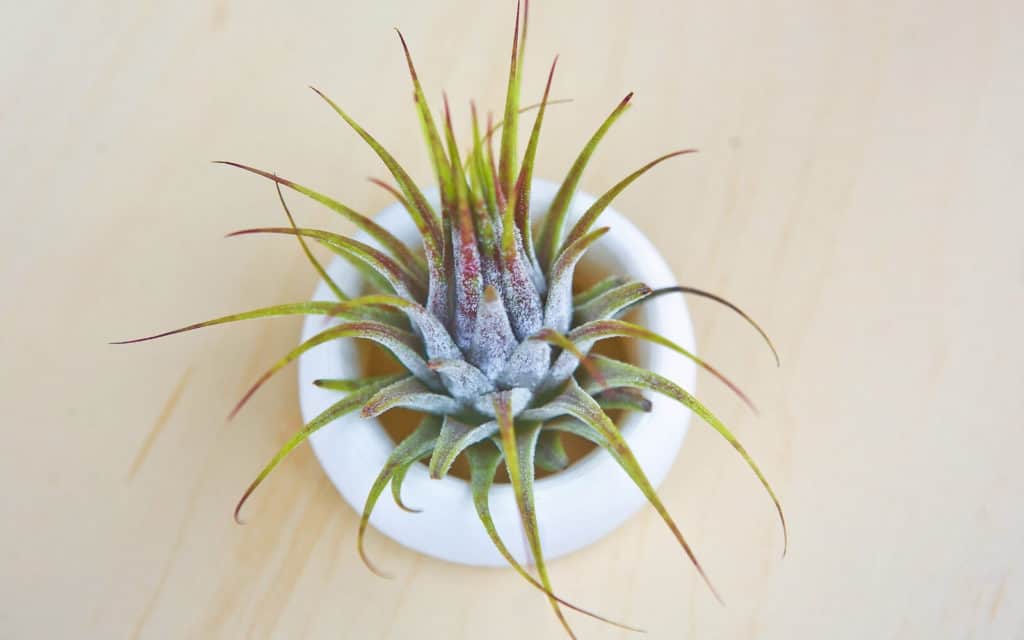
Air plants aren’t a plant but a type of bromeliad. These don’t need soil and can be grown in various ways, such as in a pot or as an epiphyte. Air plants require little to no care, which makes them perfect for people who are busy or new gardeners.
Air plants are low-light plants that thrive best in indirect sunlight, such as under an overhang or on the shaded side. These plants get their name from using atmospheric air pressure to move water and nutrients up and down their stems. They require very little water and can tolerate a wide range of temperatures.
12. Adanson Monstera (Monstera adansonii)

The Adanson monstera, also known as the Green Adanson or Swiss Cheese plant, is a low-light indoor hanging plant perfect for those looking for an easy-care plant. This plant is ideal for areas that receive low light levels, such as bedrooms or smaller offices.
These are native to the Caribbean and Central America and grow well in various climates. It can be grown outdoors in warm temperatures, but it does well indoors or on patios in cooler climates. The plant has glossy leaves with holes inside, making it look very distinct.
13. Christmas Cactus (Schlumbergera)

The Christmas cactus is a succulent flowering plant that belongs to the genus Schlumbergera. The common name “Christmas cactus” comes from the fact that they flower around Christmas time (although they may bloom at any time of year). It’s an evergreen plant that can grow up to several inches tall with fleshy leaves arranged on the stem in pairs.
The flowers are usually pink or white, easy to care for, and can be grown in low light. You can typically cut, pot, and put it on the windowsill when planting indoors. It’s a great low-light plant as it blooms when there is less light, e.g., nights should be at least 14 hours long for six to seven weeks.
14. Grape Ivy (Cissus rhombifolia)

Grape ivy is a low-light plant that is delicate and fragile. It’s a perennial which grows up to 3–4 feet in height and grows best in moist soil. The leaves are heart-shaped, glossy, and dark green with purple markings.
It will thrive in shady areas or even in the dark to medium light. It’s often used as an indoor plant. They’re easy to grow, and they come with several benefits such as improved air quality, natural insect repellent, natural weed-killer, and are capable of fighting off fungus.
15. Aglaonema (Chinese Evergreen)

Aglaonema, or Chinese evergreen, is a popular house plant. You can find it in many homes as it’s easy to maintain and has a shallow light requirement. These are native to Southeast Asia and can be found in many home gardens. They’re hardy and can tolerate low humidity levels.
You can easily grow these plants in trees, hanging pots, and hanging baskets. As it’s a low-light plant, it needs indirect sunlight and won’t grow best in direct sunlight. It’s a great plant in your home or office that doesn’t get much natural light. They require little water and have a long life span.
16. Staghorn Fern (Platycerium)

Staghorn fern is a low-light plant and prefers shady areas. They’re perfect for indoor decoration. They need to be watered regularly but don’t require too much attention. These plants grow well in cooler climates and humid conditions. They adapt well to the low light conditions of indoor environments.
They have a lot of small stems that grow horizontally, and they can grow up to 2 feet tall. They’re great for adding an airy feel to any room, and they’re also popular as wedding decorations. These are long-lasting plants as they can live for several years with proper care.
17. Devil’s Ivy (Epipremnum aureum)

Devil’s ivy is a low-light plant that does well in poor lighting conditions. It thrives in the shade and can grow up to several feet high. It’s a common houseplant with a beautiful leaf texture, suitable for indoor growing.
It tends to grow on small trees in the wild, spreading by sending out roots and forming compact clumps. The leaves grow in opposite pairs, each pointing in a different direction. This is a great hanging plant as you can keep it pruned that control the spread while encouraging bushier growth.
18. Wax plant (Hoya)

The Wax plant is a low-light plant native to tropical regions of Asia, with the primary distributions in India, Sri Lanka, and Malaysia. Then plants were so popular that gardeners introduced them to many other areas. The leaves are dark green with white or light green stripes running along the length of the leaf margins.
It blooms a small flower on short green foliage that stems from axils near the leaves. With adequate levels of light, it can grow well in poor soils. As a result, it can grow indoors as well as outdoors. You should keep the soil adequately moist and away from direct sunlight exposure in the summer and warm seasons.
19. Spider Plant (Chlorophytum comosum)

The spider plant is evergreen, growing as a vine plant. Another variegated form with striped leaves, such as snake plants, is popular among indoor gardeners. The name comes from the spider-like appearance of their leaves when young.
Spider plants are great for a low-light indoor hanging planter as they can tolerate a little neglect. This makes them easy to care for and thrive best indoors. You can also propagate these to get baby plants. These come in various heights to fit them into most spaces.
Conclusion
Using gorgeous plants that thrive in low light conditions can create an eye-catching environment that will add a splash of natural color to any room. So, if you’re looking for a way to spruce up your decor without spending a lot of money, consider using any of the above beautiful best houseplants that grow in low light conditions.
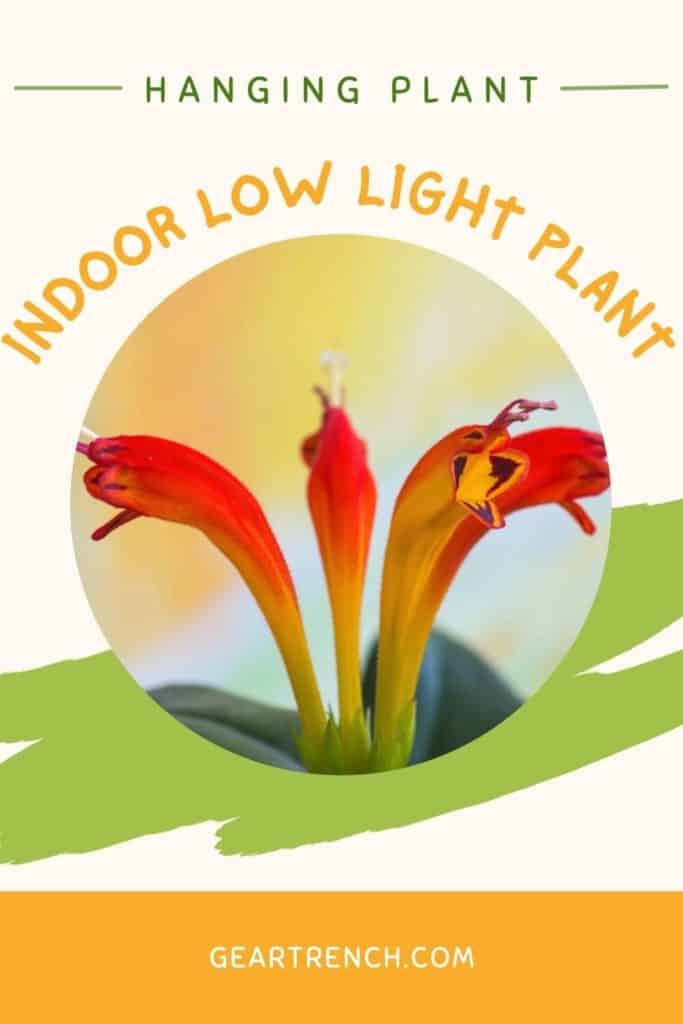
Don’t forget to share this post


